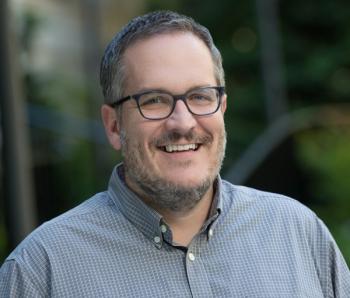
David Rosmarin, MD, provides insights on vitiligo and its prevalence among the patient population.

David Rosmarin, MD, provides insights on vitiligo and its prevalence among the patient population.

Dr Pipe discusses the impact of gene therapy in the Hemophilia B landscape, for both the payer and patient.

Dr Charles provides his closing insights, focusing on unbranded biologics targeted for pipeline development.

CIO of Prime Therapeutics, Jim Graham, discusses with MHE how to successfully reach digital transformation in healthcare from a traditional PBM.

Drs Whittle and Podesta discuss the durability and stability of DTx and PDT treatment.

Medical authorities detail how PDTs are compared with other, more conventional treatment modalities in behavioral health.

Sarah Raaii, co-chair of McDermott Will & Emery’s multidisciplinary post-Roe team, and Cat Duffy, policy analyst of the National Health Law Program, address the Dobbs v. Jackson Women's Health Organization decision of the U.S. Supreme Court in which the court held that the Constitution of the United States does not confer a right to abortion.

A hematologic expert explains the role gene therapy might play with Hemophilia B.

Dr Charles discusses the clinical impacts that nonmedical switching of biologic treatments can have on quality of patient care.

Scott Whittle, MD, uses his knowledge and experiences as a payer—with the help of the other panelists—to explain how the FDA uses gathered evidence to make decisions on approvals for PDTs.

Clinicians, pharmacists, and payers discuss how DTx and PDTs are monitored—for access, efficacy, adherence, and more.

Dr Steven Pipe delves into the economic burden associated with Hemophilia B treatment, including costs and payer considerations.

Distinctions between unbranded biologics, branded biologics, and biosimilars are explored by David Charles, MD.

Arwen Podesta, MD; Timothy Aungst, PharmD; and Scottle Whittle, MD, explain the considerations they think about before using or prescribing DTx and PDTs.

A distinguished panel provides an overview of what digital therapeutics (DTx) and prescription digital therapeutics (PDTs) are and how they’re used in behavioral health treatment.

Steven Pipe, MD, defines Hemophilia B and its standard of care.

In this second part of a two-part video series, Nathan Allen, Senior Vice President – Healthcare Provider Solutions at Firstsource, discusses Medicaid Redetermination for those who are Medicaid members, but are deemed to lose their coverage due to the upcoming expiration of COVID-19’s Public Health Emergency. Allen set a scope on Medicaid populations in rural settings and how they could be affected. However, there is hope through tech-based solutions and a proposed rule by CMS to prevent facility closures and preserve access to care for all affected Medicaid populations.

Nathan Allen, Senior Vice President – Healthcare Provider Solutions at Firstsource, discusses Medicaid Redetermination for those who are Medicaid members, but are deemed to lose their coverage due to the upcoming expiration of COVID-19’s Public Health Emergency.

Dr David Charles, MD, opens a discussion surrounding the increasing usage and unique characteristics of biologics.

MHE spoke with Matt Parker, vice president of Products at Kyruus and HealthSparq, about the recent price transparency rules that recently went into effect and how they can bring efficiency into care.

MHE spoke with Matt Parker, vice president of Products at Kyruus and HealthSparq, about the recent price transparency rules that went into effect, who they apply to and compliance improvement by insurers.

Dr Periman provides final thoughts exploring unmet clinical needs as well as forthcoming innovative opportunities in dry eye disease treatment.

Dr Laura Periman introduces current and upcoming pharmacological treatment options, including nasal varenicline, for patients with dry eye disease.

Various treatments for dry eye disease are navigated with regard to both payer and provider considerations.

Dr Periman addresses cost-related concerns associated with treating dry eye disease.

Quality-of-life concerns, including biopsychosocial impacts caused by dry eye disease, are explored by Dr Periman.

Dr Laura Periman, MD illustrates the current risk factors and prevalence regarding patients with dry eye disease.

Dr Bhatia concludes our discussion by outlining what factors physicians should be cognizant of when prescribing therapies to patients with AD.

A dermatology expert highlights the role JAK inhibitors play in AD therapy, from mechanism of action to ruxolitinib and the TrUE AD1 and -2 trials.

Dr Neal Bhatia explains the available treatment options for patients with AD, including their relation to guideline recommendations.